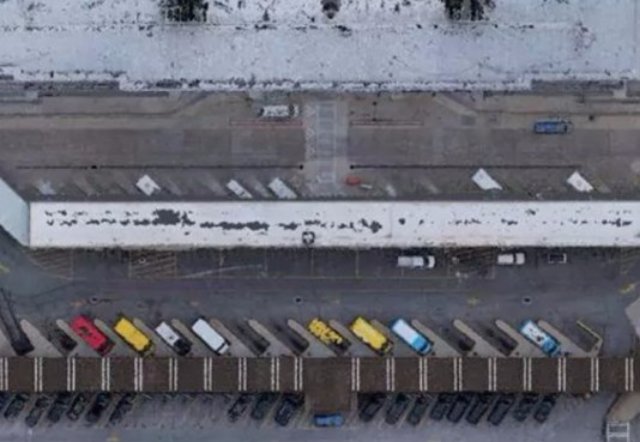One day last month in Atlanta, drones made seven flights at the world’s busiest airport with the blessing of the Federal Aviation Administration (FAA). Those flights at Hartsfield-Jackson International Airport — the first civilian drone flights given FAA approval in a Class B airspace, a designation given the busiest area around crowded airports — marked a milestone for the development of commercial drones.
The flights on Jan. 10 helped map plans for two new parking garages and for moving a public-transit station, which are part of $6 billion in expansion and improvement program. Architectural designers at Autodesk said drones flown by 3D Robotics helped measure and plan the project much faster than standard measurements.
Experts say the approval indicates that as the drone market matures, the FAA is more willing to consider broader applications for the new technology.
“It’s a very big deal,” said Jim Williams, a principal at Dentons law firm. Williams, who previously led the FAA’s drone program in the Unmanned Aircraft Systems Integration Office, said the FAA-approved airport flights are “a very good sign that the FAA is taking everything on its merits and looking hard to find a way to make things work.”
The FAA set comprehensive regulations for drone operations in August. The broad rules allow flights during the day within sight of the pilot up to 400 feet off the ground, but generally not near airports or over crowds of people. That meant the drone operators who wanted to use the devices to map the airport needed a waiver from the FAA.
That waiver was one of more than 300 that FAA has granted for commercial drone flights since the regulations took effect. FAA has granted special permission for CNN to experiment with flights over people for news gathering, and with BNSF Railway to inspect tracks farther away than the pilot can see.
The industry wants the FAA to develop more rules to avoid the need for such case-by-case reviews.
Already real estate and photography businesses use drones frequently. The construction market also sees expansive uses for drones. The investment firm Goldman Sachs estimated in January that businesses will invest $13 billion in commercial drones by 2020, with more than $11 billion in the construction industry. “That’s creating a market that is too big to ignore,” a Goldman Sachs report said.
Williams, the former FAA official, said the construction industry was among the first to adopt drones for dangerous tasks before they were technically legal.
“They would fly the inexpensive drones because it’s so much easier to do,” Williams said. “It’s so much easier to inspect the outside of a building using a drone than it is to hang somebody on a harness to look at the outside of the building.”
At the Atlanta airport, Autodesk, a design, engineering and construction software company, wanted to use the remote-controlled aircraft to help design and plan part of the complex construction project at the airport, said Tristan Randall, strategic projects executive for Autodesk.
The airport wanted to keep the existing garages operating while the new garages were under construction, so the designers needed to look at the whole picture of the airport. Drones could provide precise measurements down to millimeters in a matter of hours, rather than over days or weeks that typical design work requires, Randall said.
“It’s a pretty amazing capability of being able to – within a couple of hours – get a complete 3D model of these existing buildings and then plan construction in the same environment,” Randall said. “We’re really excited to see where this technology can go.”
But the FAA set stricter drone rules than usual at the busy Atlanta airport, which hosted 104 million passengers last year, to avoid collisions with passenger planes or crashes that could hurt people on the ground.
To use the drones for the construction project, the FAA required 3D Robotics, the company whose pilot actually flew the drones, to have someone with a pilot’s license steer the drones so that he would have experience speaking with controllers. Commercial drone pilots typically just need to pass a knowledge-based test. Three observers watched the drones from the ground to ensure they were flying along the planned routes.
The FAA put a 200-foot ceiling on the drones to avoid conflicts with airliners higher aloft. Randall said drones hovered about 150 feet in the air to measure parking garages that were about 60 to 70 feet tall from above and to the side.
The pilot kept in communication with air-traffic controllers in the airport tower for each of the 15-minute flights, to avoid conflicts with passenger planes that might have needed to fly an unusual path after an aborted landing.
The drones flew mostly along automated paths, but could have been directed by the pilot’s tablet. The aircraft didn’t lose connection with the pilot, but were programmed to return to one of the four points where they had launched. The pilot also could have recalled the drones to their launch point with the press of a button, Randall said.
“I think the safety features that we have in place have shown that this is something we could do on any construction site,” Randall said. “We’re really comfortable with how the operations went.” “I think it’s really just the beginning of what we can do in this industry,” he said.
Photo: A picture of Atlanta’s Hartsfield-Jackson International Airport taken Jan. 10, 2017, bto help design construction – AUTODESK
Source: 11Alive Atlanta

